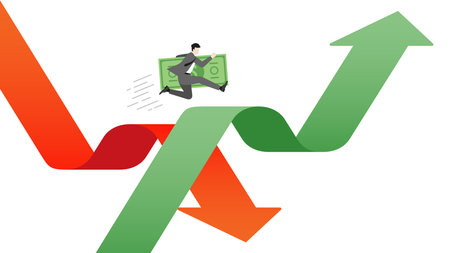Introduction to Silver in the Indian Context
Silver holds a unique and revered place in the heart of Indian society, blending seamlessly into the nation’s rich tapestry of tradition, culture, and heritage. For centuries, silver has not only been valued as a precious metal but also cherished for its spiritual significance and auspicious presence in religious rituals, festivals, and family ceremonies. In countless Indian households, silverware, jewellery, and artefacts are passed down through generations, symbolising prosperity and purity. Its traditional uses extend from intricately crafted ornaments worn during weddings to decorative utensils used on special occasions and even medicinal applications in Ayurveda. However, as India rapidly modernises and its industries evolve, silver’s role is expanding beyond its customary boundaries. Today, the conversation increasingly shifts towards understanding silver’s growing importance in industrial applications—such as electronics, renewable energy, automotive components, and healthcare—which are shaping the country’s economic future. This foundational appreciation of silver’s dual legacy sets the stage for exploring how this versatile metal is becoming indispensable to both India’s cultural identity and its industrial progress.
2. Current Industrial Applications of Silver in India
Silver has long held a place of prominence in Indian culture and industry, but its role is rapidly evolving as the nation’s economy modernises. Today, silver is not just a symbol of wealth or tradition—it is an essential material powering multiple sectors. The following exploration highlights key industries leveraging silver and outlines current demand trends across these domains.
Electronics Sector: Powering Digital India
The “Digital India” initiative has significantly boosted the electronics manufacturing sector, increasing the demand for silver due to its excellent conductivity and reliability. Silver is crucial for connectors, switches, printed circuit boards (PCBs), and various electronic components found in smartphones, laptops, and consumer appliances. As technology adoption grows even in tier-2 and tier-3 cities, the consumption of silver in this segment shows a steady upward trajectory.
Jewellery: Tradition Meets Modern Design
India’s love affair with silver jewellery is legendary, with both urban millennials and rural communities cherishing silver for its affordability and aesthetic appeal. From anklets to intricately designed necklaces, silver adornments are integral to festivals, weddings, and daily wear. In recent years, branded jewellery chains have brought contemporary designs to market, further fuelling demand among young Indians who seek both style and investment value.
| Industry | Key Use of Silver | Current Demand Trend |
|---|---|---|
| Electronics | Circuitry, Connectors | Growing with digital infrastructure expansion |
| Jewellery | Anklets, Necklaces, Rings | Consistently high; evolving with modern designs |
| Solar Energy | Photovoltaic Cells | Significant rise due to government solar push |
| Healthcare | Medical Devices & Antimicrobial Uses | Steady growth post-pandemic awareness |
Solar Energy: Paving the Way for Sustainability
The Indian government’s ambitious renewable energy targets—especially under schemes like “Make in India”—are driving massive investments in solar power infrastructure. Silver is indispensable for photovoltaic (PV) cells because of its superior electrical properties. With solar parks mushrooming from Gujarat to Tamil Nadu, the demand for industrial-grade silver is experiencing robust growth as India races towards its green energy goals.
Healthcare: Enhancing Medical Outcomes
The healthcare sector harnesses silver’s natural antimicrobial qualities in wound dressings, surgical instruments, and coatings for medical devices. The pandemic heightened awareness around hygiene standards, leading hospitals and clinics to increase their use of silver-based solutions. This trend is expected to sustain as India continues investing in healthcare modernisation and infection control measures.
Summary of Current Demand Trends
The interplay between traditional uses and modern industrial applications ensures that silver remains a highly sought-after commodity across Indian industries. With rising digitalisation, renewable energy adoption, healthcare advancements, and evolving lifestyle preferences, the current landscape points towards sustained—and even accelerating—demand for silver in the near future.

3. Emerging Trends in Indian Industries
India stands at the cusp of a transformative era, driven by rapid technological progress and ambitious development goals. As the nation embraces new-age industries, silver is set to play an increasingly vital role across several sectors. One of the most significant shifts is visible in renewable energy. With the government’s commitment to expanding solar power capacity under schemes like the National Solar Mission, there is a surging demand for photovoltaic cells—where silver paste is indispensable due to its superior conductivity and efficiency. This trend aligns with India’s vision for Atmanirbhar Bharat (self-reliant India), where domestic manufacturing of solar modules is being encouraged, further amplifying local silver consumption.
The electric vehicle (EV) revolution is another area witnessing remarkable growth. With initiatives such as FAME India Scheme incentivising EV adoption, Indian automakers are integrating more advanced electronic components into vehicles. Silver’s high electrical conductivity makes it irreplaceable in battery contacts, charging stations, and advanced circuit boards within EVs. As urban centres like Bengaluru, Delhi, and Mumbai push for cleaner mobility solutions, the demand for silver-infused components is poised to rise sharply.
Additionally, the rollout of 5G infrastructure is set to redefine connectivity across metros and smaller cities alike. High-frequency networks require robust components that can handle increased data loads with minimal resistance; here again, silver emerges as a critical material in antennas, circuit boards, and connectors. The integration of 5G technology into “Digital India” initiatives will not only enhance communication but also catalyse innovation in sectors such as healthcare, education, and smart governance.
In summary, these emerging trends clearly indicate that silver’s significance is evolving beyond traditional uses like jewellery or investment. Its role as a key enabler in futuristic technologies underscores how vital this precious metal will be for India’s industrial progress and global competitiveness.
Supply Chain Dynamics and Local Sourcing
India’s silver supply chain is a complex web, influenced by both domestic factors and global market trends. As the demand for silver rises across sectors such as electronics, solar energy, jewellery, and medical devices, understanding the intricacies of sourcing and distribution becomes vital for sustaining growth in Indian industries.
Current Silver Supply Chain Structure in India
Historically, India has relied heavily on imports to meet its silver needs. The domestic production of silver is limited, with the majority coming as a by-product of base metal mining. Major import sources include countries like Mexico, Peru, and Australia. The table below outlines the typical journey of silver from mine to market:
| Stage | Description |
|---|---|
| Mining/Extraction | Silver mined domestically (limited) or imported as raw material |
| Refining | Processed in Indian refineries to achieve industry-grade purity |
| Distribution | Distributed via wholesalers and dealers to manufacturers and jewellers |
| End Use | Converted into finished goods – electronics, solar panels, ornaments, etc. |
Challenges in Silver Sourcing
The silver supply chain in India faces several challenges:
- Import Dependency: Over 70% of India’s silver requirement is met through imports, exposing the sector to global price volatility and currency fluctuations.
- Limited Domestic Mining: Domestic silver mining is constrained by geological limitations and environmental regulations.
- Inefficient Recycling: While there is significant potential for recycling industrial scrap and old jewellery, the infrastructure and awareness are still developing.
- Sustainability Concerns: Environmental impacts of mining and refining processes require stricter compliance with green practices.
Government Regulations and Policy Initiatives
The Government of India recognizes the strategic importance of reducing dependency on imports and boosting local production. Key initiatives include:
- Policy Reforms: Streamlining licensing procedures for exploration and mining to attract private investment.
- Duties & Tariffs: Adjusting import duties on raw silver to promote value addition within India rather than exporting jobs abroad.
- Incentives for Recycling: Supporting start-ups and SMEs engaged in urban mining and recycling of electronic waste containing silver.
- Sustainability Mandates: Enforcing stricter environmental norms to ensure responsible sourcing practices.
The Road Ahead: Promoting Domestic Silver Ecosystem
The push towards Atmanirbhar Bharat (self-reliant India) aims to foster a robust domestic ecosystem for silver sourcing. By encouraging investments in mining technology, promoting skill development in refining processes, and strengthening recycling networks, India can secure its supply chain while supporting sustainable industrial growth.
5. Economic and Social Impact
Silver Demand: Strengthening the Indian Economy
The rising demand for silver in India is more than just an indicator of industrial growth; it is a catalyst for economic development. As industries such as electronics, renewable energy, healthcare, and traditional jewellery increasingly rely on silver, the value chain from mining to manufacturing expands, contributing to the nations GDP. This enhanced demand stimulates both domestic production and import activities, creating a positive ripple effect across related sectors like logistics, refining, and export businesses.
Job Creation Across Diverse Sectors
One of the most significant outcomes of increased silver usage is job creation. From skilled artisans in small towns crafting intricate silver jewellery to technicians assembling solar panels and medical devices in urban factories, opportunities span both rural and urban India. The expansion of silver-based industries encourages skill development programmes, apprenticeships, and vocational training—empowering youth and women with new livelihood options. This not only addresses unemployment but also helps bridge the rural-urban divide in economic opportunity.
Empowering Rural Communities
India’s rural heartland, home to centuries-old silversmithing traditions, stands to benefit immensely from growing silver demand. By connecting rural artisans to national and global markets through digital platforms and government schemes like Make in India, there is potential for sustainable income generation. Cooperatives and self-help groups are increasingly involved in sourcing raw materials, producing handcrafted silverware, and participating in fair trade initiatives—enabling communities to thrive economically while preserving cultural heritage.
Sustainable Livelihoods Through Responsible Practices
The focus on sustainability in silver-related industries is also gaining ground. Initiatives encouraging responsible mining practices, recycling of industrial silver waste, and adoption of green technologies are being integrated into business models. These efforts not only reduce environmental impact but also ensure long-term income security for those dependent on the sector.
In summary, as Indias appetite for silver grows, its positive economic and social impacts are felt across multiple layers of society. From boosting the country’s economic resilience to nurturing sustainable livelihoods in rural areas, silver’s future role promises to be both transformative and inclusive.
6. Investment Opportunities and Consumer Perspectives
Silver has long held a unique place in the financial portfolios of Indian households, traditionally being regarded as both a symbol of prosperity and a reliable store of value. In recent years, the perception of silver as an investment asset has evolved significantly, especially among urban consumers who are increasingly seeking to diversify their investments beyond gold and real estate. With the growing accessibility to digital platforms and organised markets, investing in silver bars, coins, and even exchange-traded products is becoming more mainstream in metro cities like Mumbai, Delhi, and Bengaluru.
For rural India, silver continues to be a preferred asset due to its affordability compared to gold. It plays a crucial role during festivals like Diwali and Akshaya Tritiya, as well as during weddings and family functions where gifting silver items is considered auspicious. These cultural practices ensure steady demand from semi-urban and rural areas, making silver not just an investment but also a part of daily life and tradition.
The future outlook for silver as an investment asset appears promising. As awareness about portfolio diversification increases, more Indian households—both urban and rural—are expected to consider silver for its dual benefits: consumption in the form of jewellery or utensils, and potential capital appreciation driven by industrial demand. This trend is likely to be further supported by government initiatives promoting financial literacy and formalisation of precious metals trading.
Moreover, the younger generations growing interest in digital investment avenues may lead to the introduction of innovative silver-backed products tailored for tech-savvy investors. The ability to buy fractional quantities online, along with transparent pricing mechanisms, is poised to make silver investment more attractive across different socio-economic segments in India.
In summary, as Indian consumers’ perception towards silver continues to mature—from being merely a traditional commodity to a dynamic investment asset—the demand for silver is set to rise in tandem with industrial growth and evolving consumer preferences. This shift will have significant implications for the future, positioning silver as an essential component in both household wealth management strategies and broader economic development.
7. Conclusion: Silver’s Evolving Role in Shaping Indias Future
As we look ahead, the significance of silver in shaping the future of Indian industries is undeniable. From traditional jewellery craftsmanship in Jaipur and Hyderabad to cutting-edge applications in solar energy and electronics, silver’s versatility remains at the core of India’s industrial progress. The rising demand for sustainable solutions, rapid urbanisation, and government initiatives like “Make in India” are all driving increased use of silver across sectors.
Silver’s unique properties—its conductivity, antibacterial qualities, and malleability—ensure its continued relevance in emerging fields such as electric vehicles, healthcare devices, and green technologies. For Indian consumers and businesses alike, silver is more than just a precious metal; it symbolises prosperity, purity, and innovation. Its role as a trusted investment option also endures, especially among families seeking to secure their financial future with a tangible asset that aligns with both tradition and modernity.
Looking forward, the potential for further growth in silver demand is robust. As global supply dynamics evolve and local industries innovate, India is poised to strengthen its position as one of the world’s leading markets for silver. Whether it’s powering next-generation technologies or adorning auspicious occasions, silver’s promise shines bright on the horizon—a beacon guiding both industry and individual aspirations towards a prosperous tomorrow.


